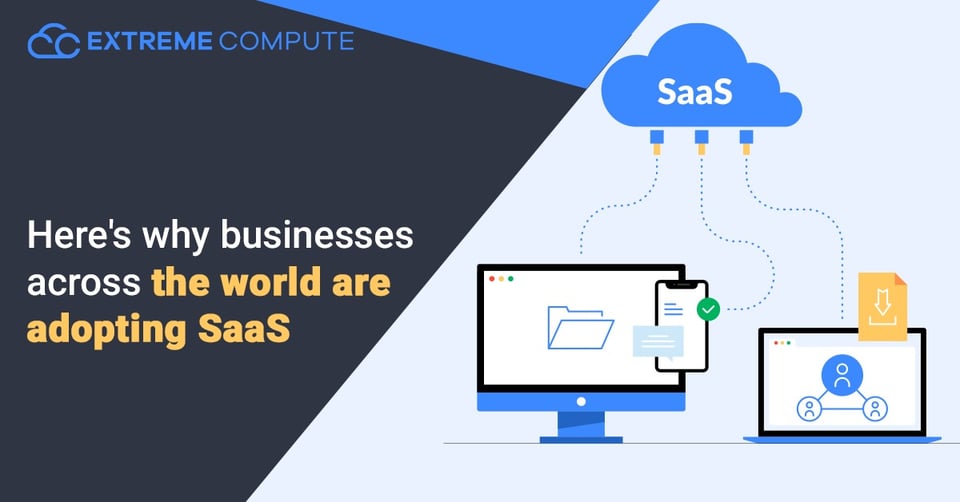
Cloud computing is an extremely common concept in the 21st century technology. The recent economic situations were a reason why many companies adopted cloud systems and apps to equip workers to work in healthy environments and WFH conditions. Cloud is capable of offering a wide range of services that can be accessed from anywhere. The Software-as-a-Service (SaaS) industry has exploded in popularity over the last few years. A cloud computing service and a method of delivering applications over the Internet are referred to as SaaS. Users can create the server, install the application, and configure it, which is an alternative to traditional software installation in the business setting.
Growth of SaaS:.
It's no surprise that the epidemic's economic instability resulted in a drop in global IT spending. Regardless, cloud investment remains a bright spot. As companies develop new capabilities to drive the next phase of innovation and development, the outlook for SaaS appears bright and will remain constant this year and beyond. Artificial intelligence, machine learning, IoT, and other emerging technologies are expected to power SaaS offerings and adoption.
To keep ahead of the competition, today's businesses depend on data. They depend on future-proof IT solutions to keep their data accessible and actionable at all times. The cloud has made storing and processing large amounts of data much simpler and more effective. And companies can make the most of their data at any time and from any place. However, using a data security service to manage, track, and secure data storage at the same time is unavoidable.
SaaS benefits:
SaaS provides accessibility, compatibility, and greater scalability. It does not cause data loss due to equipment failure and it is even easier to get started with a SaaS app. Services which one would traditionally opt for by going out or which involves manual work of logistics, now can be opted from the comfort of one's premises over the internet. SaaS can benefit smaller organizations by providing sophisticated software, applications, and resources for their business management while it can also help large companies transfer some of the software development and maintenance costs to external parties and focus on capital. It enables businesses to build virtual workspaces with their own controls.
Here are the top criteria for SaaS adoption:
- Simplicity and Speed
It might feel like an old-fashioned way but many organizations still look for a simple interface to handle hybrid and complex environments. To deploy a software application entails time and effort but SaaS is much simpler to use and easier to deploy because the program is already installed and configured. Servers can be rapidly provisioned, and applications can be up and running in a fraction of time.
- Scalability
Businesses now are keenly experimenting on scalable systems to manage their fluctuating resource needs. Being distributed over the cloud necessarily implies an inherent elasticity condition on SaaS. Users can select a SaaS framework and tailor it to their specific needs. Subscription-based product delivery allows apps to be scalable for end users.
- Cost-effective
SaaSaaS-based applications significantly cut down on costs, as they're still accessible on any computer Since it is that low, the hardware and software costs are the same. Since the SaaS has a wide range of licensing options, feature-rich apps are exceptionally easy to use.
- Future ready
While the pandemic was an unfortunate, SaaS opened new doors to businesses which almost went to a halt. With SaaS offerings, businesses were planning for digital transformation and new product offerings. Some organizations which adhered to their contemporary practices began looking at new possibilities with inclusion of Artificial Intelligence and futuristic features now made accessible by SaaS adoption.
Drop in your queries below for a tailored solution to your SaaS needs. To know more about how your business can adopt SaaS and orient it towards your goals, Read more.